https://www.youtube.com/watch?v=mIGzhfFRZ7c
How to Draw Animal Legs (dogs, cats, horses, bears etc)
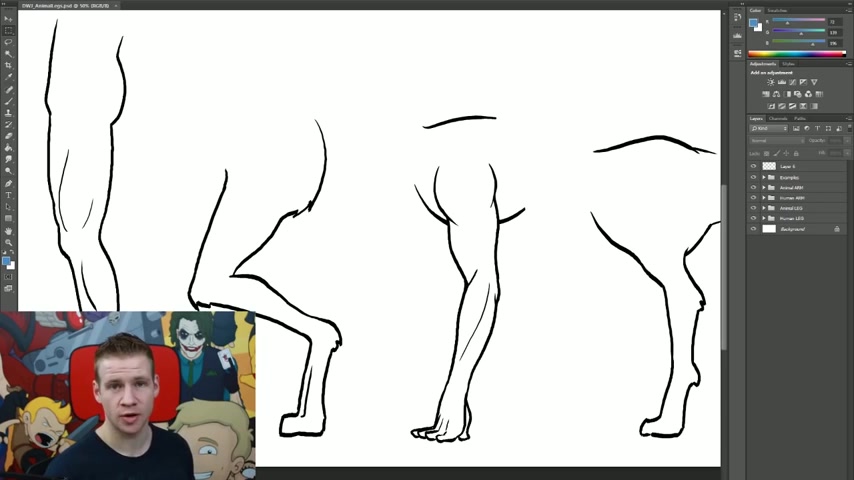
Good day , ladies and gentlemen , welcome to draw with jazz .
I'm jazz and today I'm gonna be making a video on drawing animal legs .
We're gonna talk about drawing the front and rear legs of an animal , and I'm first off gonna make the comparison between these and the human arms and legs so that in your mind you can transition your understanding of the anatomy and bone and skin structure of those , uh , human examples into the animal examples .
And as you can see , I've got a human leg next to an animal leg and then a human front arm next to an animal front leg .
The examples of animal legs in this scenario are pretty generic .
They don't belong to a specific animal , though I suppose they'd be closest Kim to a a dog .
But after I go through and make these comparisons , I'm gonna then go through to drawing some examples of these animal legs of different kinds of animals and how you can apply them in various situations .
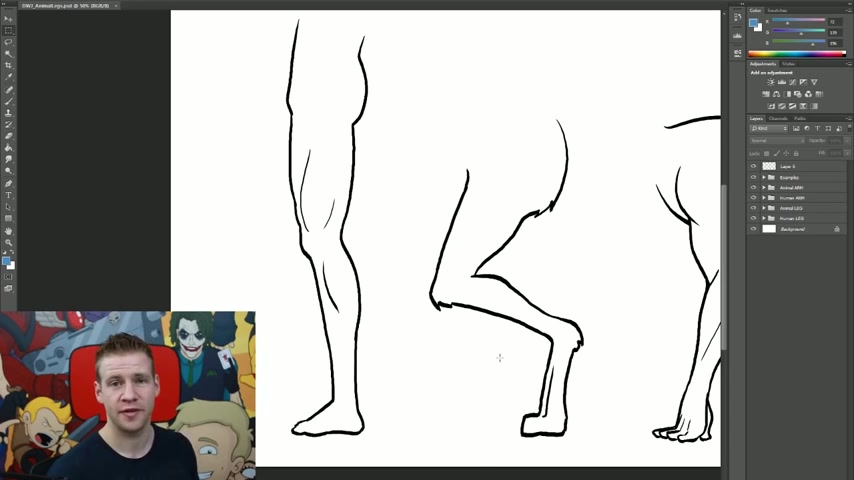
So first things first , we're gonna start off with the human leg and the animal hind leg .
Now , at first glance , the structures of the these legs look completely different .
And that's why a lot of illustrators or animators who are starting off and want to learn how to draw animal legs can be really thrown off and not really understand that anatomy .
But in reality , the anatomy is almost identical .
It's just proportioned differently , similar to the example that I gave in the video I did on drawing wings how the bone structures of the wings are the same as the arm and hand .
We have the same sort of thing happening here , but it's even closer in this semblance .
So I actually have , uh , a few , uh , things I've prepared beforehand to show you , and the first is the bone structure of these two legs .
So I'm gonna show the bones that I've , uh , prepared earlier , and I'm going to just point out a few interesting things .
First things first is the actual , uh , set up of the bones is almost exactly the same .
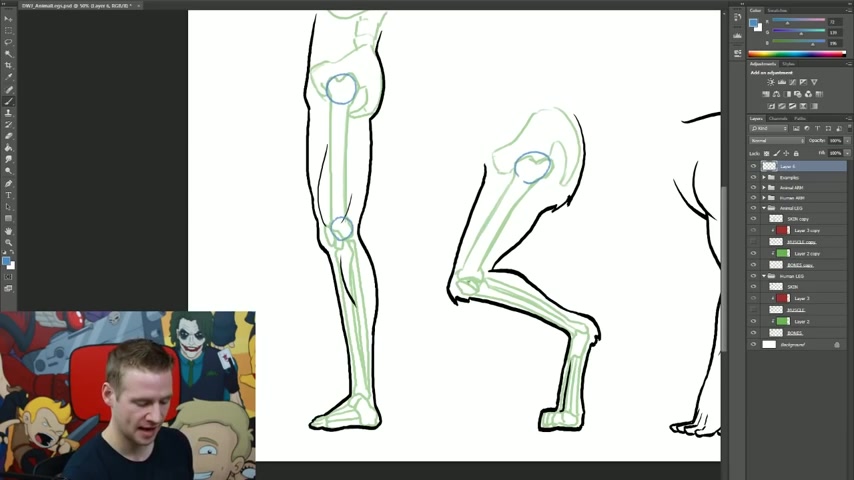
We start off with this , which I believe is called the femur , which is the top big , bulky bone , and you can see that this is present in both the human and the animal , with a larger joint starting at the hips here and ending at the knee .
So same here with the animal starting at the hips here and ending at the knee with the large bone extending from top to bottom .
Then , of course , we have a kneecap area , which it sits between the femur bone and then the lower leg bones , which , uh is , uh is it tibia and fibia .
I not entirely sure is That's not the arm ones , is it ?
It doesn't matter .
The names of the bones don't matter , because the fact is , I don't know them .
But at least the the most important thing is to know the placement .
And , uh , the placement is , uh , from where the end of the femur is and , uh , at the bottom of the knee cap , then down to the heel where the , uh , that joint is there .
Now you can see the human heel or ankle .
I suppose I should say is , uh , closer to the ground than the animal one .
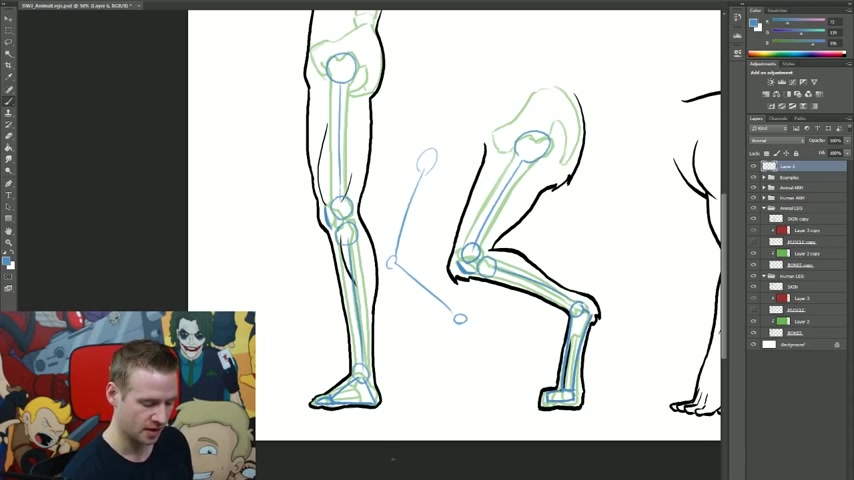
The animal one is almost on its tippy toes .
If you look at the anatomy , what's actually happening here is the equivalent as to if a human had these joints bent in the same sort of setup And then from here we have let's divide the foot into two parts .
We have the top part of the foot , and then we have the toes .
So in the human example here , the top part of the foot and the toes are both rested flat on the ground , whereas here , with the animal example , we have the toes rested on the ground and then the top part of the foot connecting to the heel .
So that is how the anatomy kind of works .
And that's why it looks a bit different because the top part of the foot of an animal , in many cases is quite long , so it almost looks like a different bone .

And and , uh , the way the leg bends looks quite different , too , because with the human leg we have a joint setup that looks kind of like this , whereas with the animal leg , we see something that looks more like this , and it's no wonder , with an angle that's more like an S , that we assume that the anatomy is different .
But in reality it's quite similar , which takes me to my next point , which is where it gets even more interesting .
The muscle structure .
So I'm gonna bring this up here and I'm gonna hide the bones that I drew .
And you can see the muscle structure is like the bones almost identical , just placed a little differently and , uh , in a different position and you can see that the major leg muscles that I've got here in the human leg and the animal leg are like I said , almost identical .
But with the animal leg ending up here at the ankle , of course there are muscles in the foot , But I'm not gonna go into detail there , and you don't really need to know it .
You almost need to know more about the bones of the foot to see how , uh , it actually looks externally .

But in terms of knowing how the shape of , uh , the the leg kind of takes place , the muscle structure is more important to know with the leg .
And so we have the same sort of muscle groups .
We have the butt muscle group , we have the front muscles of the leg , and , uh , then we have , of course , the , uh , side one and then the one on the other side , which you actually can't see then you have your hamstrings here at the back and then with the calve muscles .
And , of course , we're only showing one side of it .
Here we have the , uh , shorter , fatter calf muscle that kind of goes halfway down the leg before turning into more tendons and stuff .
And then we have the front muscle , which sort of extends down towards the ankle .
So as I've shown and here you can see that the muscle structures of the leg are almost identical as well .
So I'll just hide these .
And , uh , now I'm gonna just show you the same sort of thing with the arms .
And as you can imagine , Uh , and as I had explained previously , a similar sort of thing is happening here .
So I'm gonna start off by showing the bones .
We start off with the connection here from the large upper arm bone to where it connects to the shoulder and then down to where it connects to the elbow .
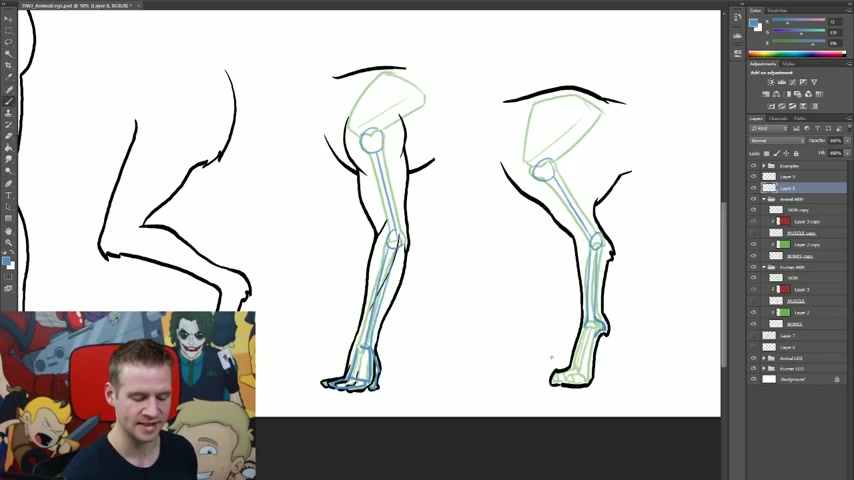
The job of a cover letter is to get an employer to read your resume .
So don't just rehash everything that's in your resume .
Go back to that job ad and just in a few paragraphs , describe why you are a good fit for the job that's on offer .
The reasons why you would be excluded pretty much up front , um , from an application for a role .
First of all , you haven't done a cover letter , and , uh , the reason that you need a cover letter is it shows that you've actually taken the time to read the job ad , and you've taken time to think about how you meet or match the criteria required .
A good cover letter is one which adds to your resume and adds to the application that you are applying for .

Just tweaked a bit .
And then , of course , I'm gonna hide these and we'll show the muscle structures and much like our other example .
It's the same sort of thing .
We start off with these shoulder muscles that kind of are divided into , uh , three groups and connecting to the back .
Um , with the animals , they're quite a bit bigger because they're bearing their weight a lot more of the time and and using those connective muscles that are in the upper parts of their arms or front legs quite a lot more than we are because we're not constantly bearing weight on them .
So , uh , their shoulders and back in particular are quite strong , where ours aren't necessarily as pronounced , but the same sort of muscle structures are happening here .
We have the bicep and tricep , and then we have the forearm and our bicep and tricep and forearm muscles when proportioned , Uh , comparatively against the back and the shoulders and , uh , those sort of more functional crawling on all fours muscles .
Ours are quite bigger .
The bicep tricep and forearm muscles .
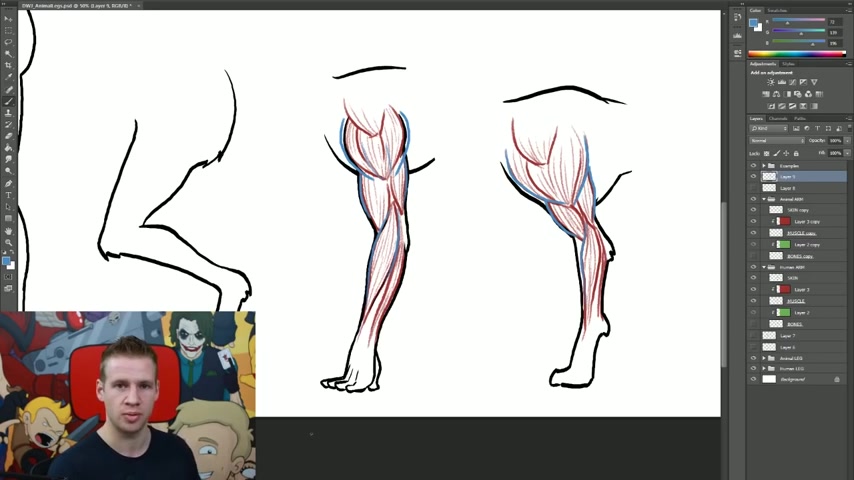
Because we do a lot with our hands , we lift , we pull , we push and things like that , and they are very much functional muscles .
Uh , on the front and and , uh , ends of the arms that animals don't use as much .
They use more this part of the muscle structure where we use more of this part .
So that's basically it for my example Set .
As you can see , I've got it all divided into layers here .
If you want to actually check it out and delve into it yourself .
And if you want to have a play , for example , if you wanna look at the , uh , animal leg muscles in isolation to anything else , you can definitely play around with the layers there .
The reference file is free .
Uh , check it out in the description .
But the last thing I wanna do is hide these layers that I have here and just draw a few different legs .
Now , first things first .
I'm going to , uh , provide an example by drawing a human leg .
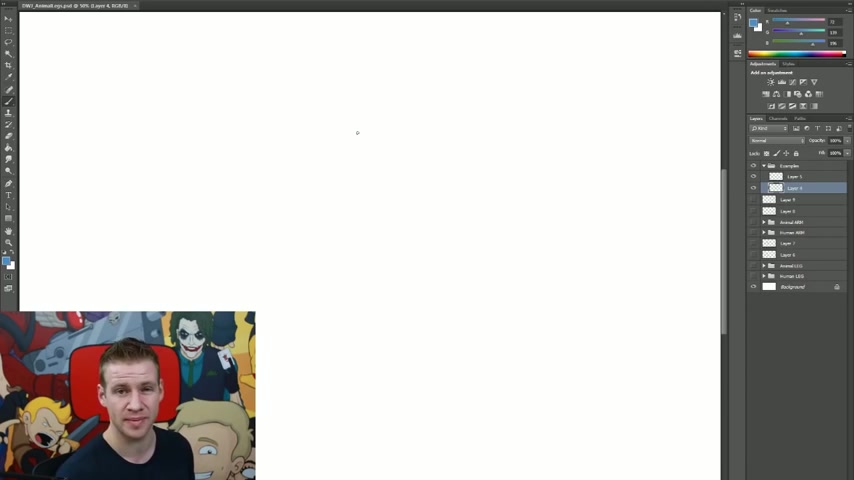
So a good cover letter can be tailored by looking at the job advert and seeking out the two or three key things in a job advert that you think is the employer is looking for and then giving an example in the cover letter of when you have shown those attributes .
So , for example , if if dealing with conflict is one of them , you might put in the cover letter a situation where you dealt very well with conflict , and it's really important to make sure it's addressed to the right person .
Find out the person's name .
Don't just leave it as a dear sir or madam .
Go to the effort to find out the person's name .
That it is personally addressed shouldn't be any more than two or three paragraphs at most .
Certainly no more than one side of a four or two or three paragraphs .
An email .
Um , the cover letter should be brief .
It should should cover four paragraphs of you know who you are and what you want , um , your skills and experiences and how they relate to the role , the sort of value that you can offer to the company and your availability to interview .

And , uh , once you learn how the structures of these different anatomical features sort of work , you can often go into drawing , uh , the silhouettes straight away .
So that is basically how I will draw the construction line of a human leg and then in drawing the line work , I'll basically add skin to the top of the bones or my construction lines .
I just kind of outline the main points of focus or the things that actually stand out more .
For example , if it's more defined in , uh , the muscles that are happening here .
Otherwise we can then just add the details like the toes add our little tweaks , and then we're basically done .
So if I hide my construction lines , you can see that I've got the basics of a human foot there .
Uh , and it was a lot simpler to put together than what the start of the video might have implied .
So this very same process would be used to create illustrations of animal legs .
So I'm gonna provide a couple of examples here .
I'll start off with , uh , maybe horse legs .
So first things first .
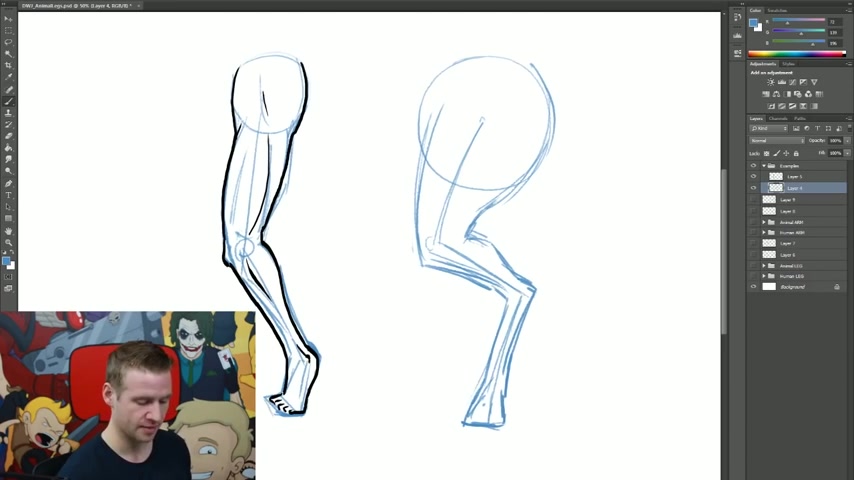
Um , clearly , you should make sure that there's no spelling mistakes in your cover letter , as should be the case also with your resume , this is your opportunity to make sure that you are grabbing the attention of the person that you are applying for the job .
Um , also highlighting the job that you are applying for , such as a reference number or a job title , um , and then skill matching your skills to the key skills that they've identified in that job advertisement .
So , for example , if they're looking for someone that's driven and passionate identifying some of those traits that you have this and demonstrated in the past in your cover letter in terms of the application that you're sending in electronically , it's important to consider whether you're gonna use the cover letter as a separate document or whether you're going to put that in .
The email .
Either is fine , but if your cover letter is in a separate document , your email should just be very short and sweet .
Dear Nina , please find attached my resume and cover letter kind regards Joe blogs .
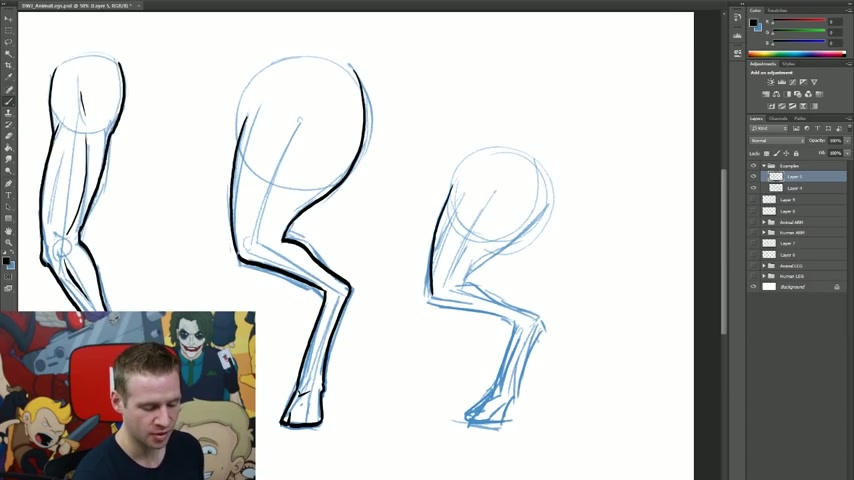
If you are not going to attach a separate cover letter , then you need to write some detail in the content of the email .
And the subject line should just be very short and sweet with the job title of the position you're applying for and the reference number if there is one .
But certainly , um , using the job ad and the skills required for a job to highlight your um experiences is extremely important in helping get you an interview that , um , you know , cover letter and in and , um , resume are , you know , the the tool to get you the first interview and you should use those to the best of your ability to try and get that meeting .
People often have a generic cover letter that they just send out .
In my experience , I've read a lot where they've actually referred to , um , another job with the job .
Cat categorization Incorrect .
They've had the incorrect name of the person or the actual .
The actual information or content of the cover letter refers to a completely different job .
So what that indicates to a recruiter is that this person is just playing a numbers game .

I'm actually not specifically interested in that role , but I'm really worried that I'm not gonna get a job .
And I think my best strategy is to just basically shoot out as many applications as possible , and it doesn't work like that .
You have to think about the cover letter and the resume as being indicative and representative of you and your brand as an employee in the market .
So if it's not special , don't send it

Now , ladies and gentlemen , make sure to check out the reference files once again , which are free in the And if you're interested in familiarising yourself even more with , uh , human anatomy and then using that knowledge to do this sort of thing , you can check out draw with jazz Easy Anatomy , which is on my website jazz a studios dot com in the shop .
And there's a link to that in the description as well .
Thank you for joining me .
Ladies and gentlemen , I hope this video has been interesting and useful to you and until next time I'll see you later .
Thanks for watching .
If you enjoyed this video , subscribe my channel to see new content every week .
Check out more of my stuff by clicking the annotations over there .
You can get the reference files for this tutorial by clicking the link in the description .
And if you want the reference files for all the tutorials I've ever made , check out the tutorial archive .
If you're looking for a great place to collaborate , explore or share your own content , head over to new grounds dot com .
That's it for now and until next time .
See you later .
Are you looking for a way to reach a wider audience and get more views on your videos?
Our innovative video to text transcribing service can help you do just that.
We provide accurate transcriptions of your videos along with visual content that will help you attract new viewers and keep them engaged. Plus, our data analytics and ad campaign tools can help you monetize your content and maximize your revenue.
Let's partner up and take your video content to the next level!
Contact us today to learn more.